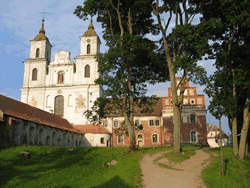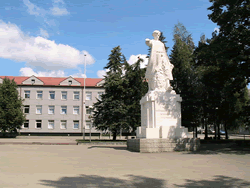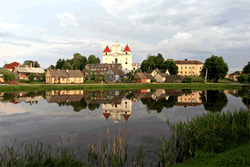|
#rasn-ns-1:
|
#rasn-ns-2:
|
|
#rasn-ns-3:
|
#rasn-ns-4:
|
|
#rasn-ns-5:
|
#rasn-ns-6:
|
|
#rasn-ns-7:
|
#rasn-ns-8:
|
|
#rasn-ns-9:
|
#rasn-ns-10:
|
|
#rasn-ns-11:
|
#rasn-ns-12:
|
|
#rasn-ns-13: |
#rasn-ns-14: |
|
#rasn-ns-15: |
#rasn-ns-16: |
#rasn-ns-17: |
#rasn-ns-18: |
| #rasn-ns-19: |
#rasn-ns-20: |
#rasn-ns-21: |
#rasn-ns-22: |
#rasn-ns-23: |
#rasn-ns-24: |
| #rasn-ns-25: |
#rasn-ns-26: |
#rasn-ns-27: |
#rasn-ns-28: |
| #rasn-ns-29: |
#rasn-ns-30: |
#rasn-ns-31: |
#rasn-ns-32: |
|
#rasn-ns-33: |
#rasn-ns-34: |
Raseiniai district municipality is located in the western part of Lithuania, almost in the very centre of Lithuania, in the north-western part of Kaunas county, 76 km to the northwest from Kaunas city. The largest river in Raseiniai region – the Dubysa, one of the most beauteous rivers of Lithuania. There are the parts of Dubysa and Tytuv?nai regional parks. The territory of the municipality is also crossed by the Šešuvis, Šaltuona, Mituva rivers. There are 4 lakes (Meškys, Paežer? and others) and 14 ponds. The percentage share of woodland is not high, whereas a larger share of land is cultivated. Agricultural land makes up as much as 63.1 %, forests – 23 %, roads – 1.9 %, built-up area – 2.5 %, water bodies – 2.4 %, other land – 7.1 % of the municipality.
There are two towns – Raseiniai (administrative centre) and Ariogala; and seven townships – Betygala, Girkalnis, Lyduv?nai, Nemakš?iai, Šiluva, Vidukl? and Žaiginys. For the first time Raseiniai was mentioned in 1253. In the 15th century, Raseiniai became a district (powiat) centre, while since 1585 – the capital of Žemaitija, a political and cultural centre. In 1792, the King and Grand Duke of the Polish–Lithuanian Commonwealth Stanis?aw August (Stanislovas Augustas) grated Raseiniai privileges whereby Magdeburg rights and a coat of arms of the town were approved. In 1831, Raseiniai was one of the main centres of an uprising in Žemaitija. The main industrial branches are textiles, food industry and manufacture of building materials.
The Dubysa River attracts nature-lovers, fans of rural tourism and canoe sport. The loops of the river, cut-off river bends, slopes grown with woods, torrential tributaries flowing through deep valleys form a unique ecosystem, rich in flora and fauna species. There are many castle mounds (those of Betygala, Lyduv?nai, Ariogala) and tumuli on the slopes of Dubysa valley. The lines of the song “Už Raseini? ant Dubysos teka saul? teka...” are well-known to all Lithuanians, whereas the bard of Lithuania, originating from Raseiniai region, Jonas Ma?iulis-Maironis spent his childhood and his most wonderful verses, which often expressed the feelings of the entire nation, were born there.
The most important architectural and cultural monuments – an elementary school, the church of the Assumption in Raseiniai, a monument Žemaitis (sculptor V. Grybas), Lyduv?nai railway bridge, a complex of castle mounds in Molav?nai, the basilica and chapel of the Nativity of the Blessed Virgin in Šiluva. One of the most visited places in Raseiniai district – Šiluva township, which is considered to be the main element of individuality of the district. It is the anchor of the Lithuanian pilgrimage road – one of the main centres of attraction to worshippers, a place of the first apparition of the Blessed Virgin Mary in Europe (1608). In 1993, Šiluva was honoured by the visit of the Pope John Paul II; in 2003, a spiritual centre named a house of John Paul II was opened in Šiluva.



